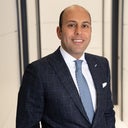I'm really sorry you're dealing with all of this. What you're describing sounds incredibly painful and emotionally exhausting. The complications you're facing are unfortunately common in people who have had silicone injections in delicate areas like the lips and perioral region. From what you've described, it sounds like the material has migrated and caused the vermillion border to extend.



